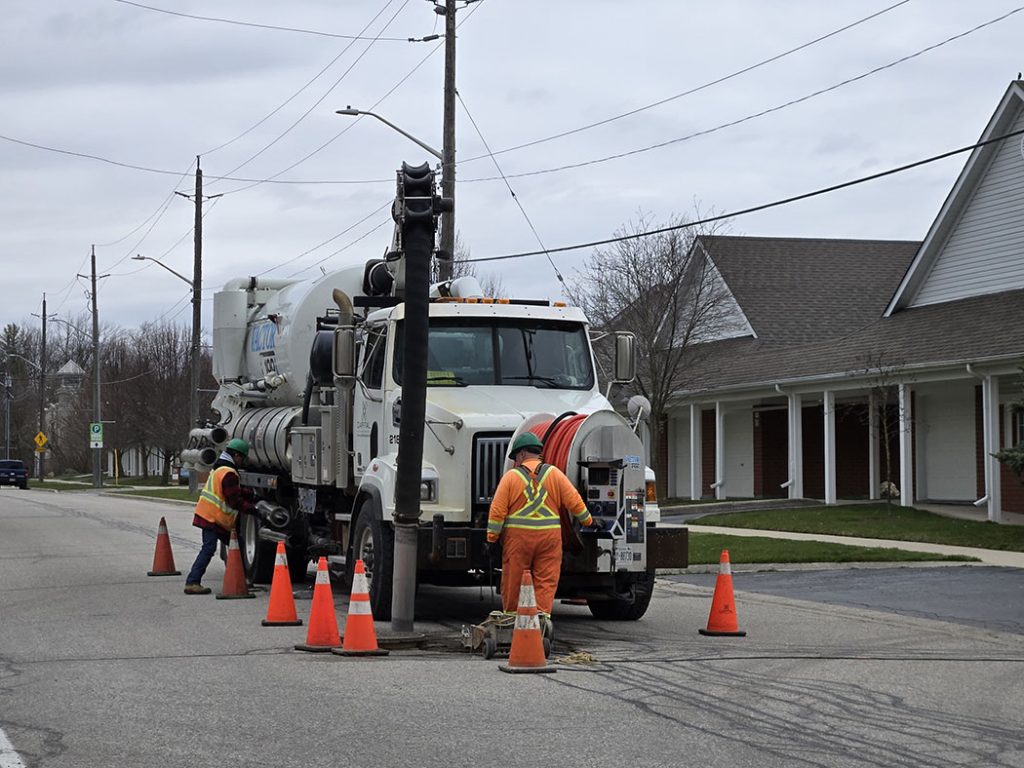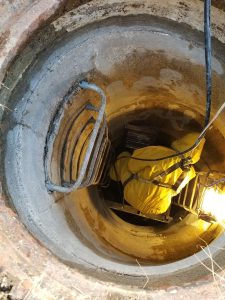
By: Jesse King, Project Manager
Municipalities often focus on technical aspects of capital improvement programs, such as inspection and condition assessments, engineering design, and constructability. It’s important, however, not to overlook one critical element: public engagement. In this blog, I’ll share how a well-executed public engagement strategy will ensure that residents are informed, involved, and aligned with the goals of the program and how that results in smoother project implementation and stronger relationships between the municipality and community.
Public engagement is not just a courtesy—it is an essential process that contributes to the overall success of your project. Engagement provides transparency, builds trust, reduces conflicts, and ensures that you’re considering the needs of the community throughout your project. For municipalities aiming to modernize or rehabilitate infrastructure, integrating a robust public engagement program into their capital improvement efforts can significantly enhance project outcomes.
Effective public engagement in capital improvement programs involves a combination of strategies that inform and involve the community. Key elements include resident surveys, informational brochures, public consultations, and online forums. Implemented together, these tools help create a two-way dialogue between municipalities and residents, which fosters mutual understanding and support. Let’s take a brief look at each tool.
Resident Surveys
One of the first steps in a public engagement program is to conduct resident surveys. Surveys are a valuable tool for gathering data on residents’ experiences, concerns, and expectations related to the project. They may provide a clear understanding of existing conditions and help identify specific issues to address during the design and construction phases of the project. For example, residents may report concerns about basement flooding, sewer odours, or disruptions from previous infrastructure projects. By gathering this information early, municipalities can tailor their technical approaches to address these concerns, enhancing project effectiveness and minimizing potential disruptions. Surveys also demonstrate that you value residents’ opinions, which fosters greater trust and cooperation throughout the project.

Informational Brochures
Capital improvement programs, particularly those involving complex infrastructure projects, can be difficult for the public to understand. Informational brochures play a critical role in simplifying technical concepts and communicating the benefits of the project to residents. Brochures can help demystify the process and reduce public uncertainty by clearly explaining the scope of the project, its timeline, and how it will address issues like sewer rehabilitation or stormwater management. Brochures should not only provide details about the project but showcase the positive impacts for the community, such as improved infrastructure, reduced flooding risks, or lower long-term maintenance costs. When presented in clear, accessible language, these materials can significantly improve public perception of the project and reduce opposition.
Public Consultations
Direct interaction with residents is one of the most effective ways to engage the public. Public consultations provide an opportunity for residents to ask questions, express concerns, and learn more about the project in an open forum. These consultations allow municipalities to present key information about the project, explain its benefits, and address any potential impacts on the community, such as temporary road closures or noise and/or dust during construction. Public consultations also provide municipalities the opportunity to demonstrate their commitment to transparency and accountability. By engaging with the public in person, municipalities can build stronger relationships with residents and ensure that their concerns are heard and addressed. This type of face-to-face interaction fosters trust and can help mitigate any resistance to the project.
Online Forums
In addition to in-person consultations, online forums provide a platform for continuous public engagement. Not all residents are able to attend public meetings, so providing a virtual space for feedback, questions, and updates ensures broader community participation. Online forums allow residents to stay informed about the project’s progress, raise concerns at any time, and engage in discussions with both municipal officials and their neighbors. The benefits of online forums are twofold: they offer ongoing transparency by making information easily accessible, and they help municipalities track and respond to community sentiment in real time. This continuous engagement reduces the potential for surprises or conflict as work progresses.
The Power of Public Engagement
Incorporating meaningful public engagement into capital improvement programs offers numerous benefits beyond the technical aspects of the project. Engagement increases transparency, provides a platform for addressing resident concerns early, and helps build long-term relationships between the municipality and its residents. Finally, projects with ongoing public engagement tend to achieve better outcomes because they are aligned with the needs and expectations of the community. When residents are informed and supportive, projects proceed with fewer disruptions, and municipalities can deliver on their commitments more effectively.
Remember: public engagement is not a one-time event but an ongoing process that should be integrated into every phase of a capital improvement program. By prioritizing engagement throughout, municipalities can ensure their projects are not only technically successful but supported in the community.
Contact me to learn more about how public engagement can enhance your capital improvement projects. I also invite you to attend my presentation at the 2024 No Dig North Conference where I will be discussing “A Holistic Approach to Rehabilitation Efforts in the Township of Woolwich”. Join me as I explore real-world examples and share insights on how municipalities can incorporate these strategies to achieve success in infrastructure rehabilitation.